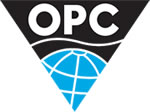Highlights
- Maiden internal Prospective Resource estimate completed at Project Leonis.
- Total estimated net mean Prospective Resource of 381 million barrels (MMbbls) of oil(1,2) recoverable from the Upper Schrader Bluff Formation (USB).
- Unrisked net 3U (high) of 671 MMbbls, 2U (best) of 338 MMbbls and 1U (low) of 167 MMbbls1,2.
- Permitting and planning has commenced for the newly named Tiri-1 exploration well designed to test the Tiri prospect in the USB Formation.
- The Tiri prospect has exceptional estimated porosity, averaging almost 30% over the 175 feet of interpreted pay.
- Concurrent farm-out process ongoing to secure a funding partner ahead of drilling.
1 Cautonary Statement: The estimated quantities of petroleum that may be potentially recovered by the application of a future development project relate to undiscovered accumulations. These estimates have both an associated risk of discovery and a risk of development. Further exploration, appraisal and evaluation are required to determine the existence of a significant quantity of potentially recoverable hydrocarbons.
2 Net Unrisked Prospective Oil Resources (MMbbls). Refer to page 5 for further details.

88 Energy reports a maiden internal Prospective Resource estimate of 381 MMbbls(1,2) of oil (net mean, unrisked) for Project Leonis (100% working interest and a 16.6667% royalty).
 Material Prospective Resources have been estimated in the USB reservoir interval within the Project Leonis acreage. The initial total Prospective Resource estimate follows a period of review of an extensive data suite that included 3D and 2D seismic data, well logs from Hemi Springs Unit-3 and Hailstorm-1, as well as nearby wells adjacent to the Project Leonis acreage, along with extensive petrophysical analysis and mapping.
Material Prospective Resources have been estimated in the USB reservoir interval within the Project Leonis acreage. The initial total Prospective Resource estimate follows a period of review of an extensive data suite that included 3D and 2D seismic data, well logs from Hemi Springs Unit-3 and Hailstorm-1, as well as nearby wells adjacent to the Project Leonis acreage, along with extensive petrophysical analysis and mapping.
Importantly, the USB formation is the same proven producing zone as nearby Polaris, Orion and West Sak oil fields to the north-west. These proven USB producers served as important calibration points for the Leonis petrophysical model. The Leonis USB prospect has been fully delineated and mapped following a review of reprocessed 3D seismic data and a 3rd party dedicated fault mapping study to assist in prospect definition.
Managing Director, Ashley Gilbert, commented:
'Following the recent success at Project Phoenix we are pleased to announce the completion of a maiden Prospective Resource estimate at Project Leonis. Being strategically located on the North Slope of Alaska, with TAPS running through the acreage and Deadhorse just six miles to the North, Project Leonis represents a significant resource and development opportunity. We have commenced permitting and planning processes for the Tiri-1 exploration well ahead of a future potential drilling event, to target the USB zone.
Timing for the drilling of the Tiri-1 exploration well is dependent on securing a successful farm-out partner, and with our 100% working interest in Project Leonis, we believe there is significant potential to secure a large proportionate carry on any future well. However, despite there being multiple parties assessing the farm-out opportunity, there is much work to be done and no guarantees a partner will be secured on our desired terms.
In terms of our Alaskan acreage position, we are now fully focused on Project Leonis and Project Phoenix, where we expect meaningful advancement with key milestones set to be achieved in the coming 6 to 12 month period.'
Project Leonis: Summary of the opportunity
The Project Leonis leases were awarded in April 2023 with a 10-year lease (refer to Schedule 3 for further information). The project provides an attractive appraisal drilling opportunity targeting 381 MMbbls of estimated net mean unrisked Prospective Resources, with upside (net 3U unrisked prospective resource estimate) of 671 MMbbls (refer to page 5 for further details of Low, Best and High estimates, and page 1 for the Cautionary Statement). Project Leonis is advantageously positioned nearby to existing infrastructure, including export pipeline and major service hubs.
The Tiri prospect within the Leonis acreage is defined by utilising a high-quality dataset comprising well data and recently reprocessed 3D seismic data, which underpins the compelling technical and commercial case for further assessment.
The unlocking of low-resistivity pay by other operators across Alaska's North Slope has led to the establishment of a multi-billion barrel oil reserve. The enormous success observed by operators targeting the Cretaceous Nanushuk Formation (such as the Willow and Pikka fields) as well as the successful development and production of reservoirs within the Cretaceous Upper Schrader Bluff Formation (such as the Polaris, Orion and West Sak fields) drove 88 Energy's focussed strategy to identify and target overlooked oil pay from legacy wells. This is evidenced by the Willow field which was originally drilled in 2002 but went unrecognised at the time. This same strategy led 88E to re-evaluate the petrophysics of the Icewine-1 well which was drilled in 2015 targeting the deeper unconventional HRZ reservoirs but also drilled through the shallower SFS and SMD reservoirs. This re-evaluation identified the conventional oil pay in these reservoirs and led to the successful drilling and testing of the Hickory-1 well in 2023-24 which produced oil to surface from both the USFS and SMD reservoirs.

The Company has now interpreted material oil pay from the legacy Hemi Springs Unit-3 well drilled on the Leonis acreage in 1985 where re-evaluation of the petrophysical data shows net oil pay of 175 ft within the Upper Schrader Bluff Formation with the well's mud logs noting oil over the shakers at multiple depths. The interpreted oil pay can be mapped over an extensive area, providing large untapped potential oil resources for appraisal and development. While modern technologies support the development of such a reservoir, at the time of drilling the Tiri prospect was overlooked with low-resistivity pay being poorly understood. Importantly, the Hemi Springs Unit-3 well targeted deeper reservoirs when drilled in 1985 and pre-drill interpretation lacked the benefit of the Storms 3D which was shot some 20 years later in 2005; another reason for why this interpreted oil-bearing reservoir was previously overlooked.
Project Leonis: Forward Program
88 Energy has engaged Fairweather to assist in commencing the planning and permitting for the Tiri-1 exploration well. The well will be designed to drill, log and test the USB zone in a single season, and will utilise the existing gravel pad at the location of the Hemi Springs Unit-3 well to reduce costs.

Timing for the drilling of the Tiri-1 exploration well is dependent on securing a successful farm-out partner. The Company has engaged Stellar Energy Advisors Limited (Stellar) in London to manage the farm-out process, who have been engaged with multiple parties in advancing the assessment of the farm-out opportunity and will continue to seek further interest from parties globally.
Focused Alaskan Strategy
88 Energy has a strategic focus on infrastructure led opportunities which benefit from proximity to Deadhorse, TAPS and other key infrastructure and in Alaska, the Company is focusing on advancing both Project Phoenix and Project Leonis. Following Hickory-1 successfully flowing light oil to surface, the Company is aiming to drill horizontal production wells and generate cash flow within the next 24 months from Pheonix as well as unlocking Project Leonis' potential through an appraisal well program.
The Company intends to divest its interest in the Umiat oil field, and also rationalise the Project Icewine West acreage which is nearing the end of the initial 8-10 year lease term. Both Umiat and Icewine West will be marketed for divestment of working interest and/or relinquished over the remainder of 2024. Project Peregrine remains in suspension until late 2024.
The Company will benefit from a reduction in leases costs as well as from a focused strategy that unlocks value from key acreage positions that benefit from their strategic locations.
Prospective Resources Estimate - Project Leonis
The assessed maiden Prospective Resource estimate associated with 88 Energy's Project Leonis acreage (100% working interest) is summarised below.

1. 88 Energy net resources have been calculated using a 100% working interest and a 16.6667% royalty.
2. COS represents the geological chance of success as assessed by 88 Energy, taking into account and risking of such factors as source, timing/migration, estimated reservoir and quality, mapped closures and seal effectiveness.
3. Prospects are subject to a phase risk (oil vs gas). Chance of oil has been assessed as 100%. Phase risk has not been applied to the unrisked numbers.
4. The Prospective Resources have not been adjusted for the chance of development. Quantifying the chance of development (COD) requires consideration of both economic and other contingencies, such as legal, regulatory, market access, political, social license, internal and external approvals and commitment to project finance and development timing. As many of these factors are not yet known, 88 Energy has qualitatively assessed the chance of development as "probable" upon geological success given the strategic location of the acreage position adjacent to TAPS and key infrastructure.
The data used to compile the prospective resource report includes reprocessed 3D seismic data as well as thorough petrophysical analysis of publicly available wells and historical geological records. The data was compiled and interpreted by 88 Energy.
88 Energy's methodology for determining Prospective Resources for Project Leonis
88 Energy has determined Prospective Resources by interpreting the top and base pay (calculated In the Hemi Springs Unit 3 petrophysical model), using the reprocessed 3D seismic data within the Project Leonis area. Parameters including potential pool area and thickness, porosity, hydrocarbon saturation, oil expansion and recovery factor were estimated on a probabilistic low, mid and high basis. The Prospective Resources relate to the Upper Schrader Bluff mapped prospect which one (1) well could effectively test. The unrisked prospective resources estimates (and associated geological chance of success) were modelled using Monte-Carlo analysis on the assumption there was no economic minimum and that volumes and risks of each of the prospective intervals within each prospect were independent.
The Prospective Resources have not been adjusted for phase risk or chance of development. 88 Energy have considered the chance of discovering oil over gas to be 100% and 88 Energy has qualitatively assessed the chance of development as "probable" upon geological success given the strategic location of the acreage position adjacent to TAPS and key infrastructure.
The estimates of Prospective Resources included in the announcement have been prepared in accordance with the definitions and guidelines set forth in the Petroleum Resources Management System ("PRMS") as revised in June 2018 by the Society of Petroleum Engineers. The PRMS defines prospective resources as those quantities of petroleum which are estimated, as of a given date, to be potentially recoverable from undiscovered accumulations.
The evaluation date for the Prospective Resources stated within this document is 3 June 2024.
Please refer to the disclaimers attached as Schedule 1 of this ASX release for more information on the prospective resource report.
Source: 88 Energy











